North Korea’s Yongbyon Nuclear Center: Reprocessing Status Remains Unclear
Commercial satellite imagery of the Yongbyon Nuclear Scientific Research Center indicates that heightened activity at the Radiochemical Laboratory (RCL) since late February is continuing. Currently, there is no definitive evidence that the coal-fired Thermal (Steam) Plant, which supplies steam to the RCL, is operating for the purpose of a new campaign to extract plutonium from spent fuel (reprocessing). Plausible alternative explanations include that the North Koreans plan to process radioactive waste or conduct some type of operational maintenance.
There are unrelated signs of continued operations at the Uranium Enrichment Plant (UEP), including installation of what could be some new support equipment for the centrifuge halls, possibly related to the existing cooling system, indicating ongoing uranium enrichment for either reactor fuel or weapons applications.
Operations are also underway to build new dams upstream of the reactor area in the Kuryong River to better control the cooling water supply, which is essential to safely restart the 5 MWe Reactor and bring the new Experimental Light Water Reactor (ELWR) online.
Radiochemical Laboratory
Imagery indicates the coal-fired Thermal Plant that supplies steam for the processes of the RCL has been operating since late February. Figure 2 shows the steam lines serving the steam distribution building and excess steam being vented from a small stack alongside the building. This does not necessarily mean that a reprocessing campaign is underway or about to get underway to extract plutonium. Steam is also required to treat radioactive wastes that the North Koreans may be processing from previous campaigns.
Moreover, there have been no clear signs in the available imagery of spent fuel being transported from the 5 MWe Reactor storage facility to the RCL (Figure 3), which would be another indicator of spent fuel reprocessing.
Alternatively, in 2018, the Thermal Plant operated for a couple of weeks, possibly for operational maintenance purposes. This campaign appears to be longer, but maintenance cannot be ruled out.
Figure 1. Smoke emission observed at Thermal Plant, April 1, 2021.
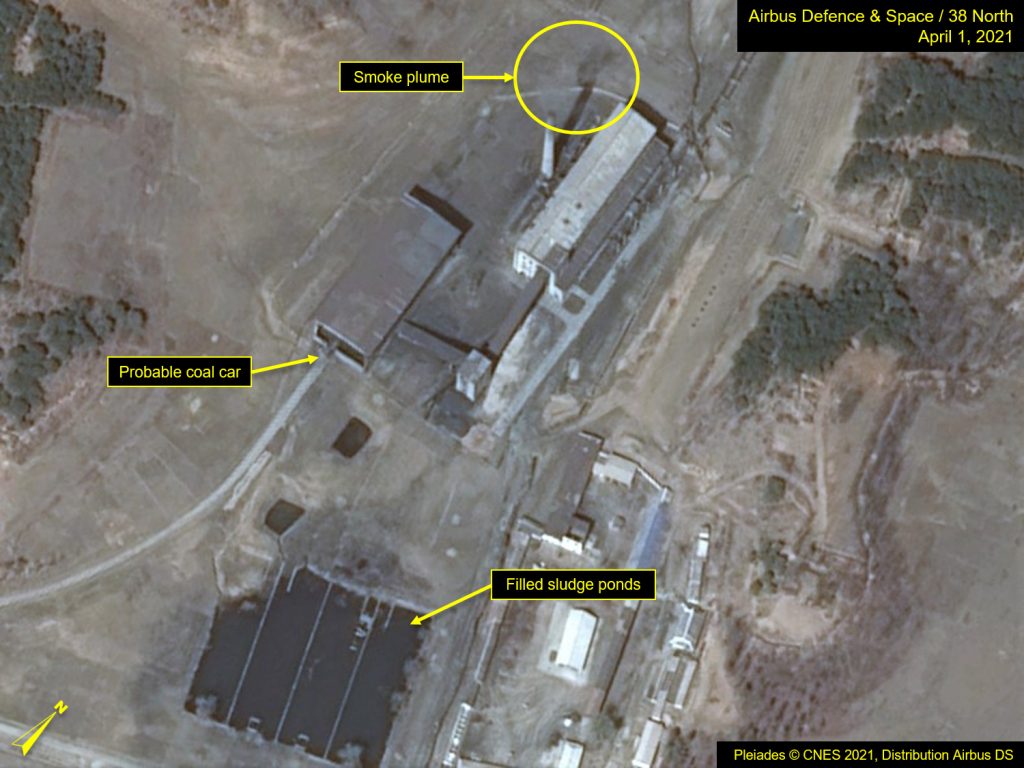
Figure 2. Steam venting at Radiochemical Laboratory complex, March 30, 2021.
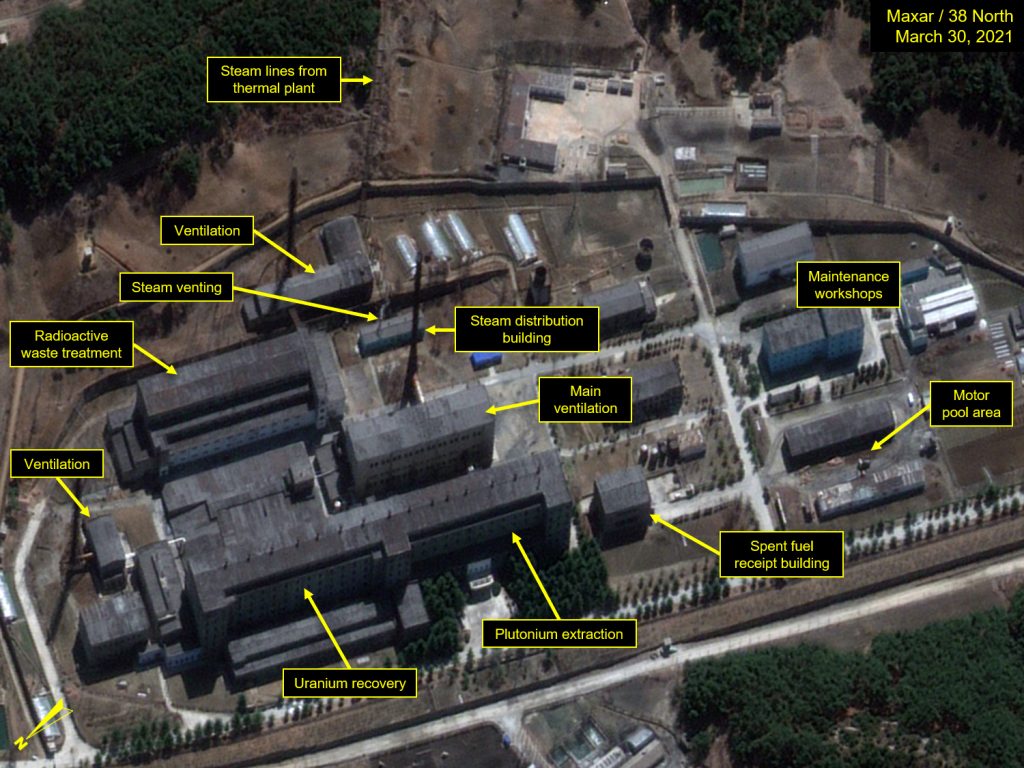
Figure 3. Overview of reactor complex, March 30, 2021.
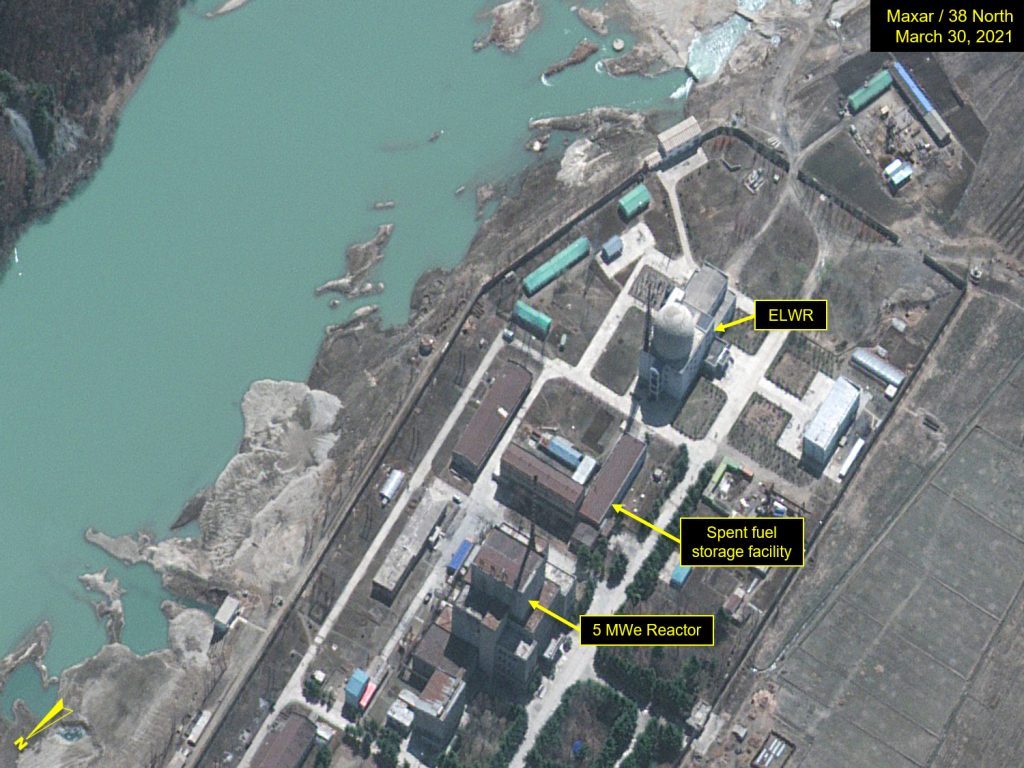
Possible Modifications Observed at the UEP
Figure 4 shows two dark-toned features in the courtyard of the UEP adjacent to the annex, where five (of six previously) cooling units are located on the annex rooftop.
Figure 4. Possible modifications the UEP, March 30, 2021.
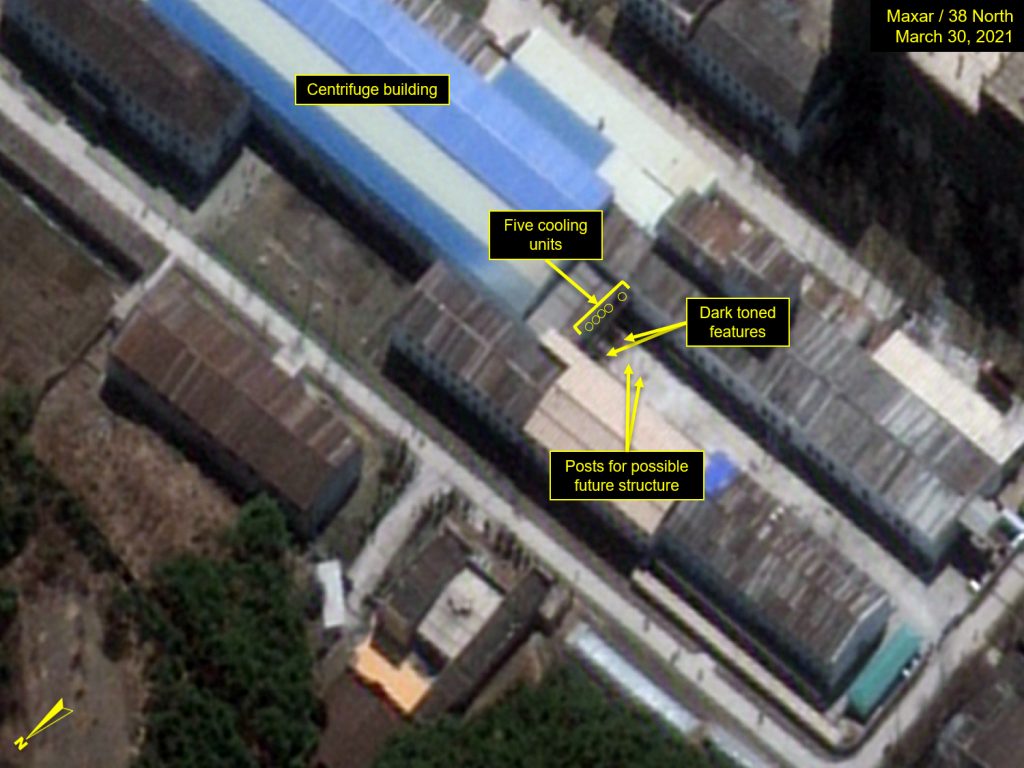
The possibility of either changing or upgrading the cooling capacity of the centrifuge hall is one consideration, given that redundancy to the cooling system would help ensure uninterrupted operation of the plant. Problems with the cooling system have been noted previously, demonstrated by the replacement and repositioning of three of the units in late 2014, and the removal of one of the cooling units last year, which has yet to be replaced. A new cooling system (particularly air-cooled heat exchangers) would prevent the condensation problems previously detected as roof staining and caused by operations of the existing cooling units. However, we cannot rule out other support infrastructure modifications or improvements at this time, given that initial work on what could be a framework to cover any new equipment is also evident. Such changes suggest plans to continue uranium enrichment for either reactor fuel or weapons applications. The actual enrichment level of the UEP remains to be confirmed.
Continuing Problems with Reactor Cooling Water Supply
Figure 5 provides an overview of new developments along the Kuryong River that are likely intended to provide a more reliable supply of cooling water to meet the needs of the entire reactor complex.
Figure 5. River management projects along the Kuryong River, March 30, 2021.
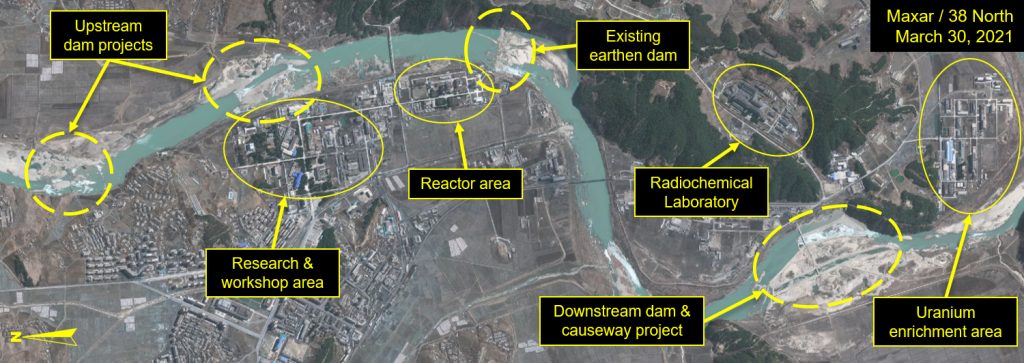
When there were no dams to manage the river flow, the North Koreans had to contend with dramatic changes in river water levels caused by the seasons and storms. Two years ago, they completed the first earthen dam at the reactor complex, resulting in a significantly stabilized water flow through the creation of a constant-level reservoir. However, even with that new dam, seasonal floods caused water levels to overflow and breach the dam.
Accordingly, Figure 5 shows two additional locations upstream of the reactor complex where similar dams are being constructed that would also stabilize the water flow and the main reservoir water level. These additional dams would also reduce the amount of gravel and silt getting to the reactor cooling water intakes during floods through decantation. The third dam or causeway downstream of the reactor complex appears to be intended to ensure there is sufficient water to meet the needs of the RCL and UEP areas adjacent to it.
These river management efforts will contribute to the safe operation of the 5 MWe Reactor if and when North Korea decides to restart it. The improvement of water flow may also increase the possibility that the ELWR can finally be started, but the status of the interior construction work and the ability to fabricate fuel for the new reactor remain unknown.
